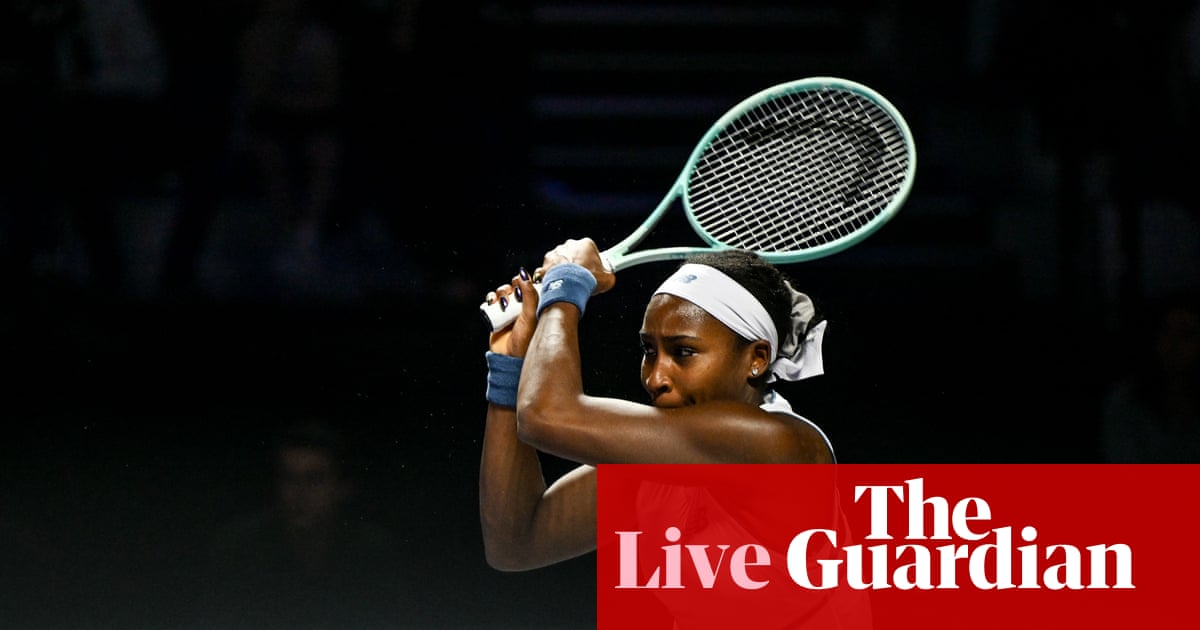One year after Donald Trump won his way back into the White House, voters are going back to the ballot box in a test of the president’s popularity and whether Democrats are able to rebound from their catastrophic losses of 2024.
With governor’s mansions, mayoral offices, statehouses and mid-cycle redistricting on the line in closely watched contests from Trenton, New Jersey and Richmond, Virginia to New York City and beyond, the party is pinning its hopes on locally rooted campaigns aiming to blunt a national conservative message that has surged in recent years.
The contests come as Democrats face their deepest popularity crisis in decades. The party’s favorability rating has plunged to historic lows, hitting 27% in one NBC News poll in March, the worst since tracking began in 1990, driven by frustration among Democrats themselves over the party’s response to Trump’s 2024 victory and perceptions that the party has lost touch with ordinary voters.
But September polling from Gallup and October analysis by pollster G Elliott Morris shows a correction may be underway, and that Democrats are pulling ahead of Republicans on their handling of the economy – Trump’s signature issue.
The results Tuesday night will help show whether Democrats can rebuild after 2024, or if the right’s momentum can carry some seats of power into the rest of the decade. The stakes are high across the board: in Virginia, Democrats see their best pickup opportunity; in New Jersey, the party is fighting to hold its ground in a state not always so opposed to going red; and in New York City, its insurgent nominee would give the party its highest profile leftwing leader and could forecast a new, unifying message for the Democrats, while “yes” on California’s Prop 50 would show just how far voters are willing to take the fight right to Trump.
Enter: Mamdani, Sherrill and Spanberger
Across New York, New Jersey and Virginia, candidates have all found a version of a unifying message focused on taxes, housing, schools and public safety. But there’s also another common theme: the loathing each state has developed for Trump over the year, and how the Republican side has largely tried to insulate themselves from the winds of Washington.
Trump has now plummeted to a 63% disapproval rating, according to CNN polling dropped in the final days of the election, while also facing double-digit disapproval in New York City, New Jersey and Virginia.
In New York City, the Democratic socialist nominee, 34-year-old assemblyman Zohran Mamdani, has run a city-centered campaign promising aggressive housing, economic and public transit measures while leaning into a grassroots coalition that propelled him through a surprise primary victory. He faces a fractured field that includes Republican Curtis Sliwa and the resurgent, independent candidacy of the former Democratic governor, Andrew Cuomo.
Besides his long support of the pro-Palestinian cause that has made him a target for Islamophobic attacks, Mamdani’s pitch is emphatically local, and his campaign has intentionally downplayed national culture wars and foreign policy to keep focus on day-to-day city services. His platform includes a rent freeze for rent-stabilized apartments, free bus service and universal childcare. Polls show him with a commanding lead, up 25 points over Cuomo in Emerson College’s most recent survey.
But an increasingly aggressive and online Cuomo, running on an independent line after losing the Democratic primary, is trading on name recognition and managerial experience. His presence complicates the math for Democrats and gives moderate voters an alternative to Mamdani without having to back a Republican. Former mayor Michael Bloomberg has thrown his support – and an additional $1.5m – behind Cuomo in the final days, and he also picked up an endorsement from outgoing mayor Eric Adams.
In nearby New Jersey, the race is tightening to a photo finish between Democratic congresswoman Mikie Sherrill and Republican Jack Ciattarelli. After summer leads for Sherrill, late-October polls showed the race essentially even, with the edge trending toward the Democrat, and both candidates are trying to sell an image of competence over ideology.
Sherrill, a sitting member of Congress, is pitching plans to ease property taxes, improve infrastructure and make living in the state more affordable, arguing that steady, practical leadership can help reduce cost pressures on families. Ciattarelli, a former state legislator, is also selling a message of reform, term limits and affordability in more populist-style fashion than his previous run, but is deliberately towing the line tying him to Trump and the national Maga movement. He’s looking to flip swing counties and capitalize on dissatisfaction with outgoing Democratic governor Phil Murphy, whose approval rating sits at 34%.
Virginia’s gubernatorial fight is similar and different: Democrats are rallying behind Abigail Spanberger, the former centrist “Mod Squad” congresswoman and CIA officer who is trying to make the race about affordability, but is getting the benefit of being the backyard of a massive and angry federal workforce targeted by Trump over the year. She’s pitted against Republican Winsome Earle-Sears, the state’s sitting lieutenant governor who has leaned on the culture war and dubbed Spanberger a Washington insider.
The polling has been favorable to Spanberger, with one late October survey by Roanoke College showing her risk-averse campaign has ballooned her to a 10-point lead. Her closing argument is anchored in affordability: lowering energy and health costs, shoring up rural hospitals and being more practical on housing and workforce development.
The state is also seeing all 100 house of delegates seats on the ballot, with Democrats holding an eight-point edge on the generic ballot, though the lieutenant governor and attorney general races are tight.
In Minneapolis, incumbent mayor, Jacob Frey, is seeking a third term amid fatigue over public safety and housing, while state senator Omar Fateh’s progressive challenge has earned him the title of “Mamdani of Minneapolis”. It will be another test of whether the city’s leftwing coalition can translate organizing energy into power under ranked-choice voting.
But nothing has been a lighting rod for Democratic frustration with the Trump and wider Republican playbook like California’s Prop 50. If voters push it through, it would authorize mid-decade congressional redistricting to counter Republican gerrymandering in Texas, temporarily replacing California’s independent commission with Democratic-drawn maps. Backed by governor Gavin Newsom, Barack Obama, Kamala Harris, Alexandria Ocasio-Cortez and George Soros – who cut a $10m check to promote it – the “yes” campaign raised $121.9m.
after newsletter promotion
Recent polls show it will be approved, which would signal a party willing to abandon past principles in the face of what voters see as the dangers of Trumpism.
The Republican playbook
Republicans are testing whether Trump’s coattails still fit, aiming to harness his turnout machine without much of his rhetoric. They’ve tried to keep focus away from Trump’s national guard deployments, global tariffs and mass federal workforce layoffs and instead have zeroed in on issues that poll well such as crime and public safety, immigration and messaging about education and school policy. They have also tried to paint Democrats as out of step with suburban swing voters.
In Virginia, Earle-Sears has leaned into education and cultural-issue messaging designed to motivate a more conservative base and peel off skeptical suburban voters. Her campaign has also tried to frame Spanberger as risk-averse and too closely tied to national Democratic priorities, particularly around immigration and what Earle-Sears calls “sanctuary state” policies. On the debate stage and on social media, she accused Spanberger of supporting “men in girls’ locker rooms” and being “on the wrong side of every issue”.
In New Jersey, Ciattarelli has honed in on fiscal discipline and property tax relief while feeding on the anxiety about the cost of living. His campaign has focused on swing counties where voters prioritize taxes and public services, choosing to wade into regional battles, such as threatening “reverse congestion pricing” if New York City implements its own plan.
Three core voter priorities
Three core issues are rising to the top of voters’ lists: the cost of living (including housing and healthcare), public safety and education. It’s not unusual that local storylines are the deciding factors in off-year elections.
In New Jersey, 52% of voters told Emerson College in late October the economy is the top issue facing the state, followed by threats to democracy (14%), housing affordability (11%) and immigration policy (5%). The gender divide has also solidified: men break for Ciattarelli by 16 points, while women break for Sherrill by 18 points.
In Virginia, a late October survey from the Wason Center cited voters top concerns as threats to democracy at 18%, inflation at 18% and healthcare at 11%.
In New York City, Mamdani’s focus on housing affordability and transit has resonated particularly strongly with the majority of voters under 49, according to late October Emerson College polling, though he remains weaker among older voters and some outer-borough cohorts concerned with public safety. Emerson College noted that crime was the most important issue to 26% of all city voters, but among Democrats, affordable housing topped the list.
Education policy has been an added flashpoint in New York, with all three major candidates offering competing visions for the city’s public school system, the largest in the country with over a million students.
What would victory mean?
For Democrats, the results are existential in one sense and practical in many others. Nationally, the party is looking to show it can make a comeback where it matters most to ordinary voters, even after a bruising presidential loss. While a win in Virginia represents their best opportunity for a wide-margined victory over Republicans, New York has the potential to rain bold and progressive new policy ideas among an energized progressive wing across the country.
For Republicans, winning key governorships and mayoralties would consolidate a narrative of post-2024 strength and potentially shift the national conversation heading into the 2026 midterms. A Ciattarelli victory in New Jersey would be particularly significant, demonstrating that suburban voters are still receptive to fiscal conservatism and pragmatic governance.

 4 hours ago
8
4 hours ago
8

















































